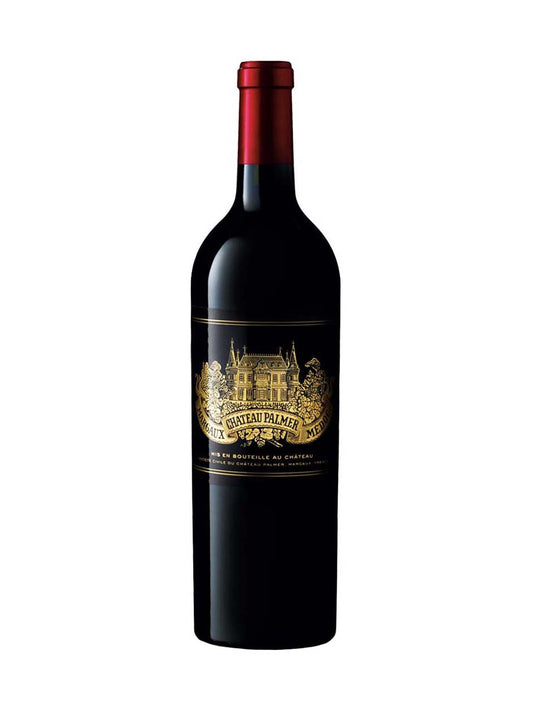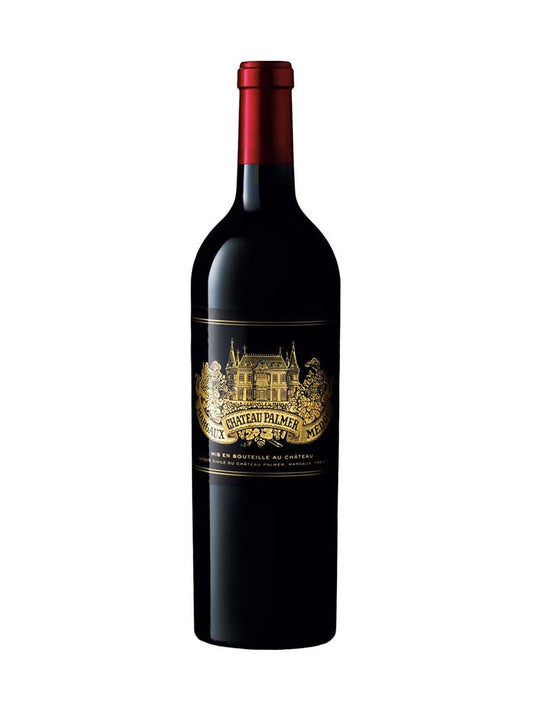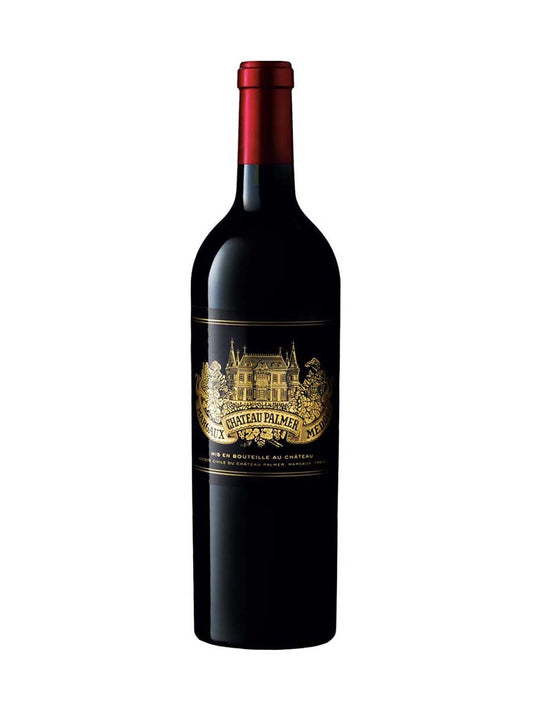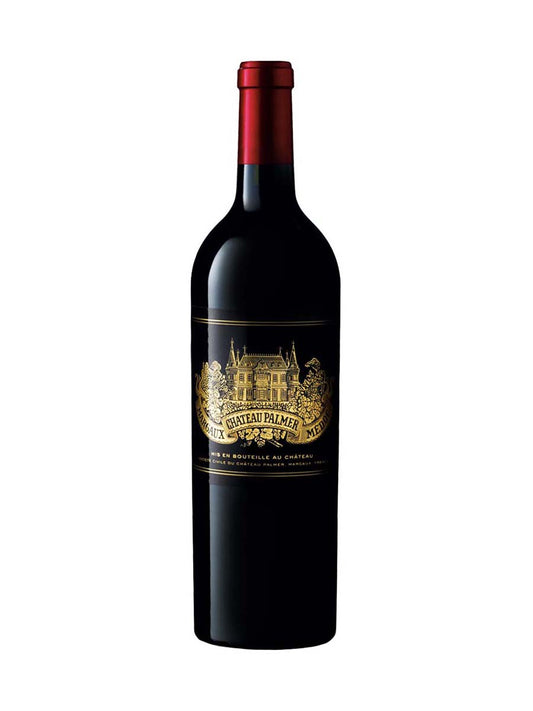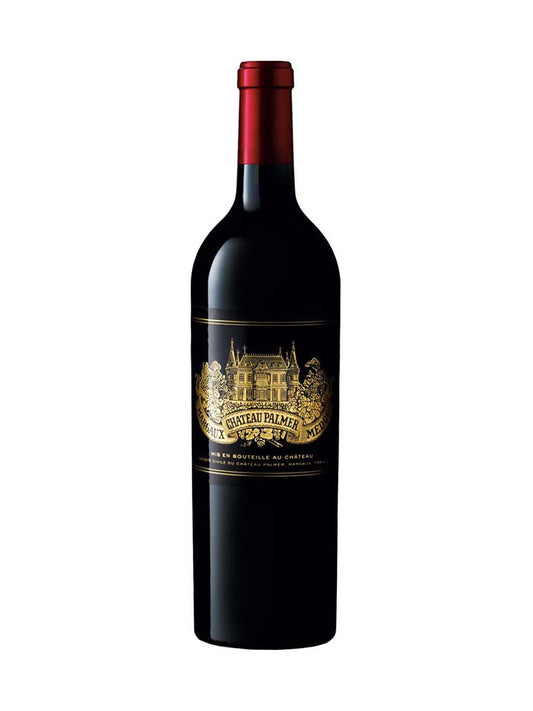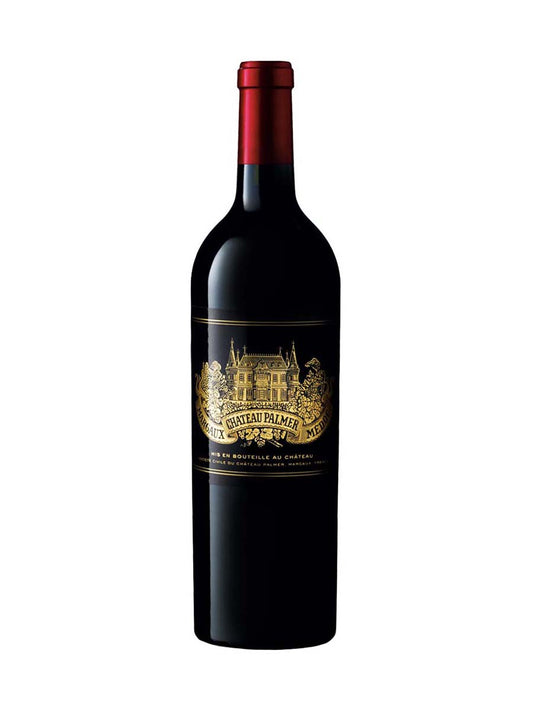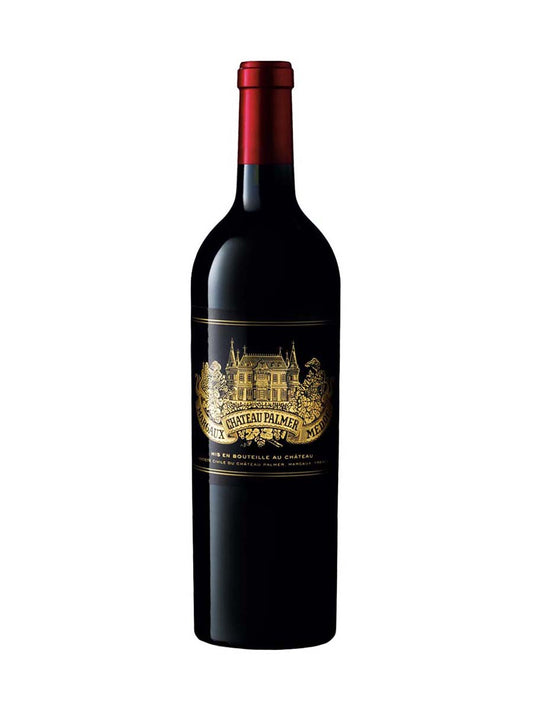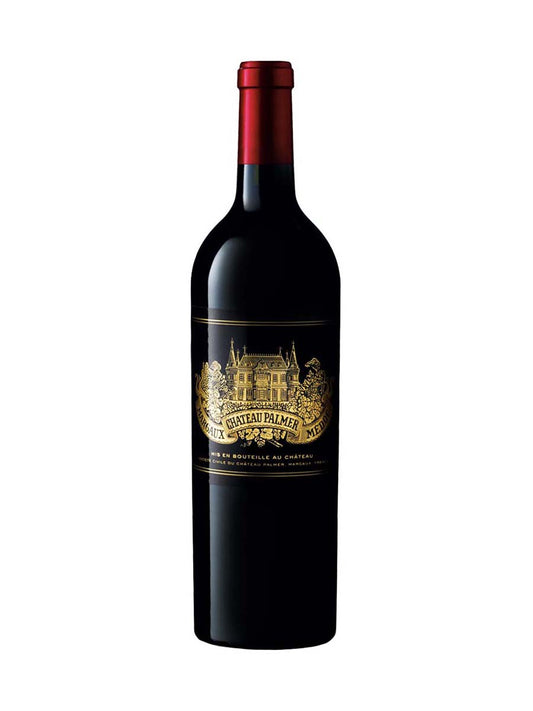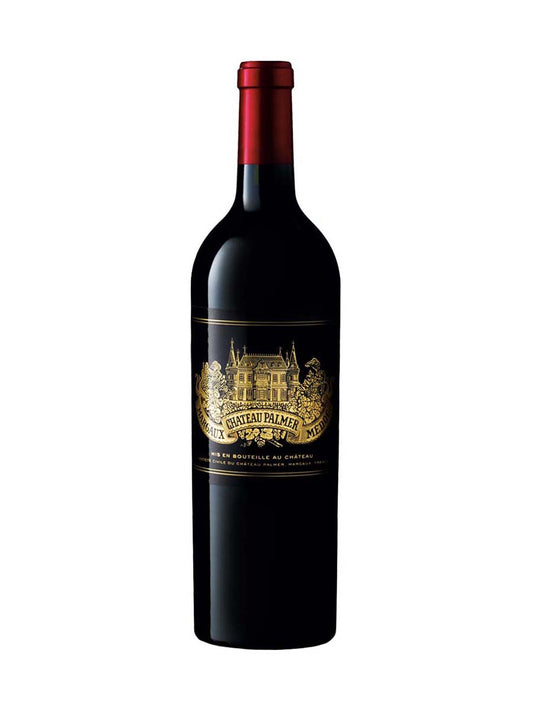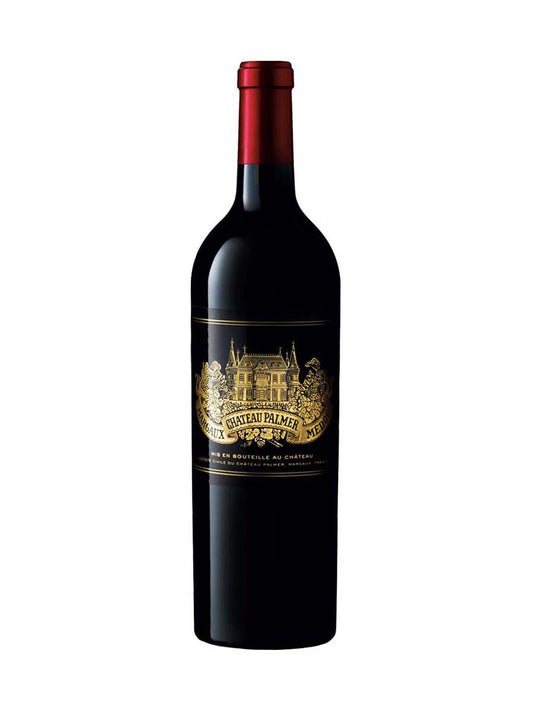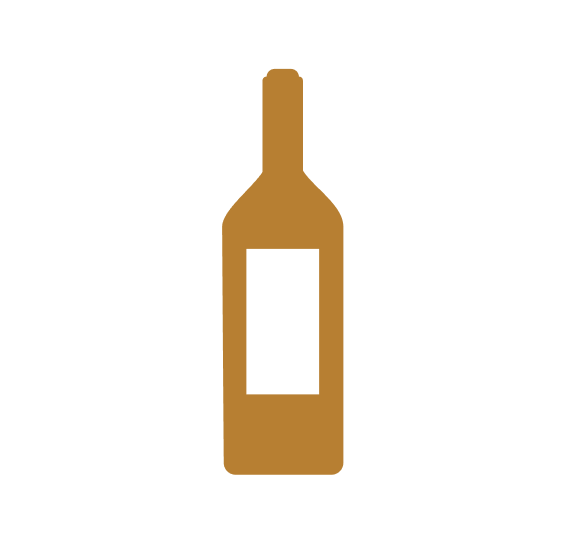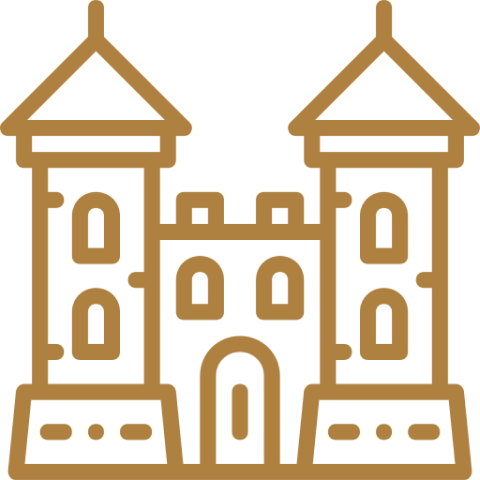CHATEAU PALMER
The English general, Charles Palmer acquired the estate in 1814 and gave it his name in the 1830s. The Pereire brothers, influential bankers, bought Château Palmer in 1853, just before being classified as Troisième Cru in 1855. In 1938, the estate was bought by four great families, wine merchants from Bordeaux, the Ginestet, the Mihailhen, the Mähler-Besse and the Sichel. The last two families are nowadays the estate’s owners, but it has been run by Thomas Duroux, an agricultural engineer and oenologist, since 2004. Plus d'information
Découvrez nos millésimes CHATEAU PALMER
Château Palmer, a living heritage in Margaux
A story unlike any other
The Palmer estate, with its towers and fairytale setting, is located in the famous Margaux appellation. It gives all its letters of nobility to the expression “château”, commonly used in Bordeaux to designate wine estates but not...
-
90
Robert Parker
94
Wine Spectator
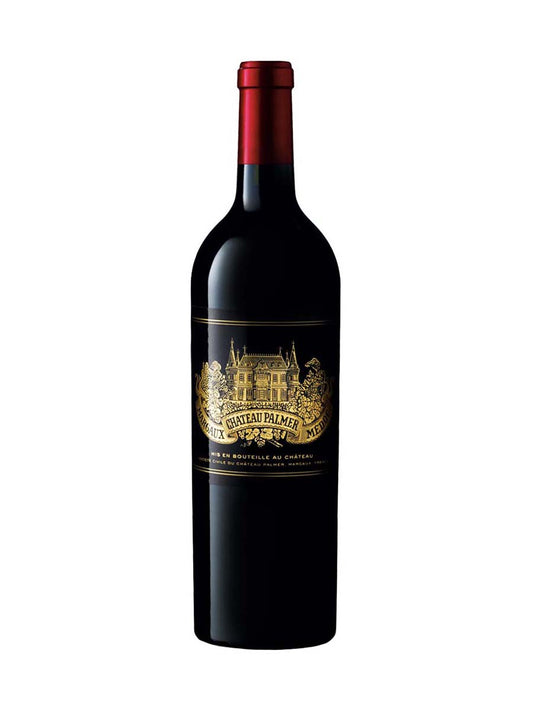
CHATEAU PALMER, 1971
-
90
Robert Parker
94
Wine Spectator
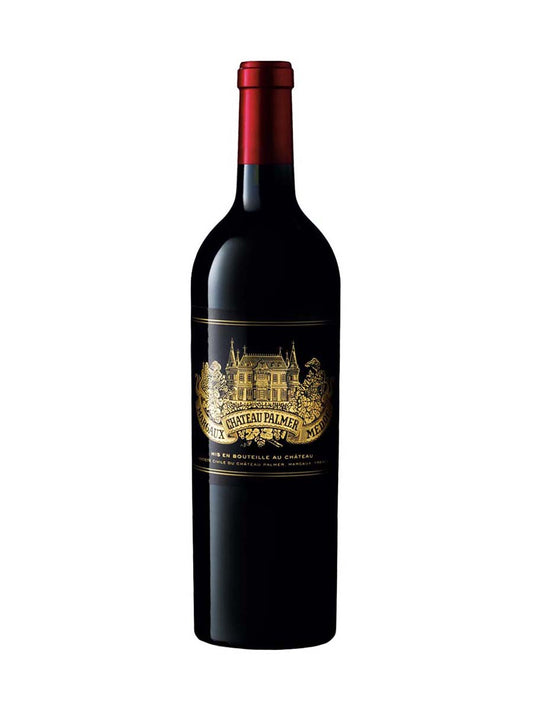
CHATEAU PALMER, 1975
-
90
Robert Parker
94
Wine Spectator
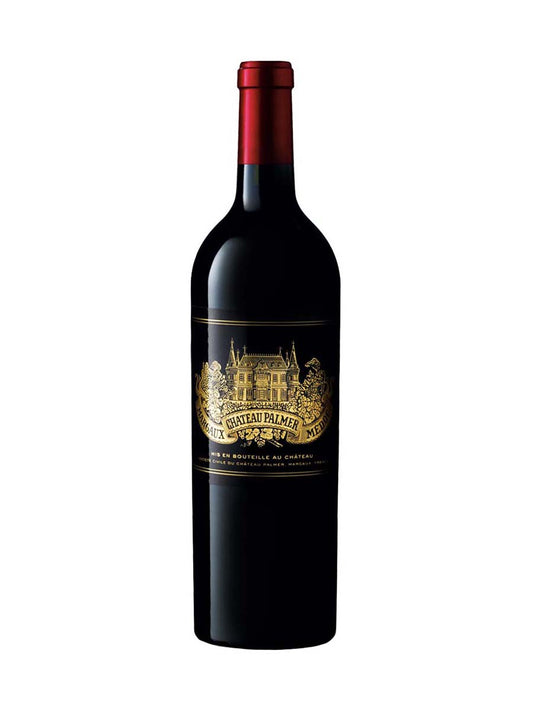
CHATEAU PALMER, 1982
Découvrez nos millésimes CHATEAU PALMER
Château Palmer, a living heritage in Margaux
A story unlike any other
The Palmer estate, with its towers and fairytale setting, is located in the famous Margaux appellation. It gives all its letters of nobility to the expression “château”, commonly used in Bordeaux to designate wine estates but not always referring to real châteaux. This third Grand Cru Classé in 1855 has been managed, influenced and sublimated by numerous international families without ever losing its lustre.
The Charles Palmer Legacy
The incredible destiny of Château Palmer began in 1814, when a young English general, Charles Palmer, decided to buy the estate. He was responsible for establishing Palmer's reputation as one of the finest châteaux in Bordeaux and the world, and invested all his wealth and time in the estate. His ambitions seem to be a perpetual quest for excellence rather than short-term profit. He wanted to leave his mark on history. Château Palmer owes its name and style to him.
He undertook major works to produce a great wine, as well as land acquisitions. Between 1814 and 1831, Charles Palmer bought around 163 hectares of land adjoining the chateau in Cantenac, Issan and Margaux. He introduced modern equipment and new production techniques, then built a building to house the workers and a winery with 15 oak vats and 3 presses.
Unfortunately, Charles Palmer was forced to sell the estate in 1843, in debt. And, leaving this world before 1855, he did not have the pleasure of seeing the quality of his Château recognized and ranked among the greatest.
The influence of the powerful Pereires family
Just before the 1855 classification, a Parisian family with Jewish-Portuguese origins purchased the property, the Pereire family. This act was a true sign of power and distinction. The Pereire brothers began their careers at Baron James de Rothschild's famous bank. Very early on, they sought to diversify their business into various sectors such as economic journalism, real estate, railroads and so on. They enjoyed great success and, to affirm their social standing, decided to buy this property in the Médoc.
What does Château Palmer owe them? Its baronial architecture, which makes it so unique in the wine world. Its neo-bourgeois label design.
An architectural jewel, Made by Les Pereire
Château Palmer is a masterpiece commissioned by the Pereire family from architect Charles Burguet, who was for 3 decades the chief architect of the city of Bordeaux. This light-colored stone structure was compared to “a villa on the shores of Lake Como” by Alfred Danflou, the author of the first book on the great Bordeaux châteaux.
After completing the Château Pichon-Longueville estate in Pauillac, Burguet moved on to Palmer. A graduate of the Beaux-arts, his references include Rome's Ville Medici, Pompeii and Herculaneum. The building captures in its setting the soul of a Greco-Roman palace, with inspirations from neoclassical and medieval movements. The structure and the presence of marble and columns attest to the important influence of Italian architecture at Palmer.
The owners didn't decide to rename the Château despite their work. However, for the more observant, medallions on the lintels of the two corner windows bear the initials E and I in tribute to owners Emile and Isaac Pereire.
Le Bleu Palmer
The Château Palmer label is adorned with a deep ultramarine blue, suggesting that black dominates, but which reveals lovely bluish reflections in the sunlight. The history of Bleu Palmer is a real mystery; it is associated with the Pereire family, as it appeared under their governance.
This unique blue distinguishes Palmer from other Châteaux. It shares this distinction of a very strong label identity with Châteaux such as Ducru-Beaucaillou, Cos d'Estournel or even Beychevelle. Blue is a color with a positive connotation. A symbol of elegance and royalty, it's one of France's favorite colors.
Modern management
In 1938, the remaining 35 hectares of vineyards and Château Palmer were purchased by an unprecedented group of four merchants: Ginestet, Mähler-Besse, Sichel and Miailles. Today, only the two négociants Mähler-Besse and Sichel run the estate, while the Ginestet and Miailles families have sold their shares.
From the 1960s to 2004, the company was managed by Bertrand Bouteiller, a member of the Mähler-Besse family, who was replaced by Thomas Duroux.
The talented Thomas Duroux
Thomas Duroux was selected to head Palmer as General Manager for a number of reasons. With a background in agronomy and oenology, he has had many prestigious experiences in the world of wine. He passed through Château Léoville Las Cases, then flew off to work in Tokaj in Hungary, in California for Robert de Mondavi and then in Italy for Ornellaia. Although a junior at the time of recruitment, 34 years old, his profile combines technical, marketing and vineyard management skills, both in France and abroad.
Palmer, an inimitable style of wine
Palmer wines are legendary for their finesse and elegance. They derive their elegance from the unique terroir of the Margaux appellation, known for producing delicate wines. Palmer's micro-climate produces wines with a sophisticated texture, tannins whose grain recalls the touch of velvet and the firmness of leather. Palmer's blend combines powerful, structured Cabernet Sauvignon with round, fruity Merlot, complemented by hints of spice from Petit Verdot. This high proportion of Merlot in the blend is uncommon in Médoc estates. The aromatic bouquet opens with fruity, floral and spicy notes. The deep, complex palate reveals a generous structure and powdery tannins.
A signature from a unique terroir
The Palmer terroir is the cornerstone of the wines' unique identity. The Plateau des Brauzes is composed of Graves dating back to the Ice Ages. These gravelly soils contain a treasure trove of precious stones from the Quaternary era: Lydian, quartzite and chalcedony. These different geological strata are of paramount importance for wine quality. They allow the vines to grow ideally, ensuring natural drainage while storing the necessary heat.
The presence of Graves and the fact that there is less clay in the soils give the wines a finer feel. By choice, the Merlots are planted on the same Graves soils as the Cabernet Sauvignon. This particularity reveals its full potential when blending.
With the arrival of Thomas Duroux, new, more precise soil analyses were carried out to enable differentiated vinification. Parcels were isolated according to their geological composition, which can vary within the same block. A “resistivity” map was drawn up to measure the volume of water present in each plot, to learn more about soil structure and delimit smaller lots within each plot. And, at the same time, a complementary map measuring vine vigour was produced to help make better decisions in the event of climatic constraints.
Uncompromising quality
Thomas Duroux set about converting to dynamic organic farming soon after his arrival, under the guidance of Isabelle Pernet, the Chateau's Technical Director. She advocates a holistic approach in which each plot is considered a precious garden. Green manure, market gardening, animal husbandry and arboriculture are all part of the daily vocabulary. The long-term aim is for the teams to become experts in the agricultural area surrounding the Chateau, from composting to tomato cultivation.
The remuneration of pruners has been reviewed since 2004. Normally, pruners are paid according to the number of vines. At Palmer, pruners are paid by the hour, which is 20% higher, but all the more quality, as the pruners take the time needed to look after each vineyard.
Duroux installs three sorting tables and two reception lines to enhance the quality of the wine. Parcel-by-parcel selection is taken to the extreme, with certain vats divided into two levels. In 2005, new hydraulic presses are added to the equipment to obtain a better press wine.
Alter Ego, a modern Bordeaux wine
Since 1998, a new wine has been added to the collection: Alter Ego, a Bordeaux wine with a modern look. Duroux points out that this wine is not really a second wine, as it doesn't fit the classic definition. It is not made from younger vines or from lots deemed of lesser quality to be blended with the grand vin. Alter Ego has its own character, and a different vinification. It is made with the same yields as Palmer. Fermentation temperature is lower to produce a softer, less tannic style. It's a wine that can be enjoyed sooner, between 5 and 7 years after release, and is attractively priced.
The advantages of Chateau Palmer
Palmer has reintroduced the second release of their 10-year cellar-aged wine to adapt to the modern world's demand for ready-to-drink wines.
In 2023, more than a wine and more than an estate, Château Palmer aims to revive the spirit of its neighboring village and restore it to its former glory.
An artistic streak
For Château Palmer, winemaking and tasting are a natural part of an artistic universe. Jazz music and photography are two important artistic spheres. As such, the Chateau regularly collaborates with artists to highlight the intrinsic beauty of the world around us. Since 2023, Leica has been a partner of Le Chateau, welcoming photographers in residence for a few weeks to create a temporary exhibition lasting a few months in Paris in the Leica gallery.
With regard to jazz music, a parallel can be drawn around the development of jazz music. Jazz music is a constant improvisation, but around a central theme and a procession of musicians. Wine production also has central elements, the estate and the vineyard, but each vintage is an improvisation punctuated by the weather and the seasons.
A very special wine
In 2004, with the arrival of Thomas Duroux, a mysterious cuvée was created: the historic 19th-century wine. It's a wine blended from the grape varieties found in Palmer's vineyards, plus 15% Syrah from the Northern Rhône. Where does this idea come from? There was a time, in the 19th century, when blending wines from several regions, notably the Rhône, to structure and strengthen Bordeaux wines was commonplace, even among the premier crus.
Mythical vintages
The iconic vintages produced by Château Palmer are numerous, and include : 1929, 1961, 1983, 1990, 2009, 2010.

